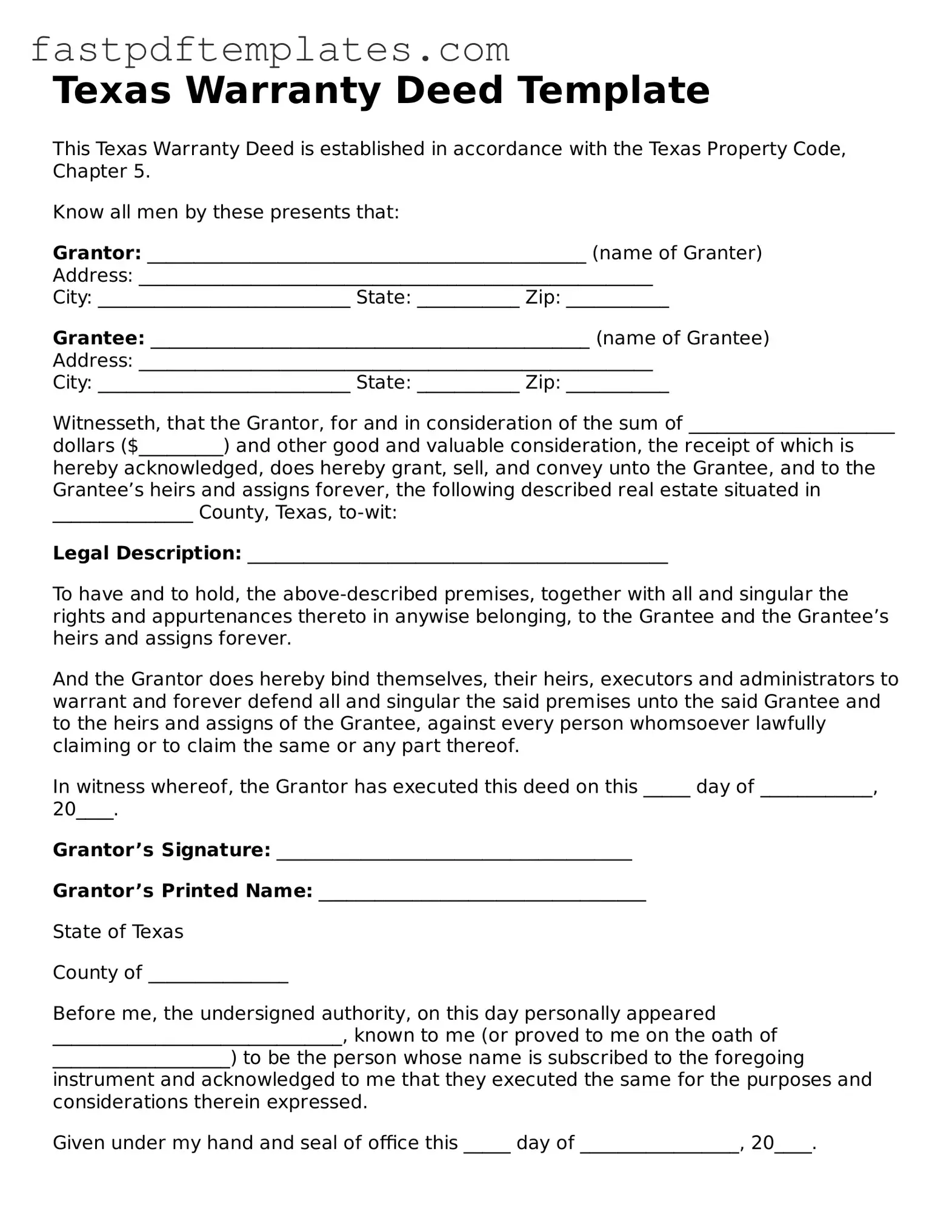Texas Warranty Deed Template
This Texas Warranty Deed is established in accordance with the Texas Property Code, Chapter 5.
Know all men by these presents that:
Grantor: _______________________________________________ (name of Granter)
Address: _______________________________________________________
City: ___________________________ State: ___________ Zip: ___________
Grantee: _______________________________________________ (name of Grantee)
Address: _______________________________________________________
City: ___________________________ State: ___________ Zip: ___________
Witnesseth, that the Grantor, for and in consideration of the sum of ______________________ dollars ($_________) and other good and valuable consideration, the receipt of which is hereby acknowledged, does hereby grant, sell, and convey unto the Grantee, and to the Grantee’s heirs and assigns forever, the following described real estate situated in _______________ County, Texas, to-wit:
Legal Description: _____________________________________________
To have and to hold, the above-described premises, together with all and singular the rights and appurtenances thereto in anywise belonging, to the Grantee and the Grantee’s heirs and assigns forever.
And the Grantor does hereby bind themselves, their heirs, executors and administrators to warrant and forever defend all and singular the said premises unto the said Grantee and to the heirs and assigns of the Grantee, against every person whomsoever lawfully claiming or to claim the same or any part thereof.
In witness whereof, the Grantor has executed this deed on this _____ day of ____________, 20____.
Grantor’s Signature: ______________________________________
Grantor’s Printed Name: ___________________________________
State of Texas
County of _______________
Before me, the undersigned authority, on this day personally appeared _______________________________, known to me (or proved to me on the oath of ___________________) to be the person whose name is subscribed to the foregoing instrument and acknowledged to me that they executed the same for the purposes and considerations therein expressed.
Given under my hand and seal of office this _____ day of _________________, 20____.
Notary Public Signature: ________________________________________
Notary Public Name: ___________________________________________
My Commission Expires: ________________
